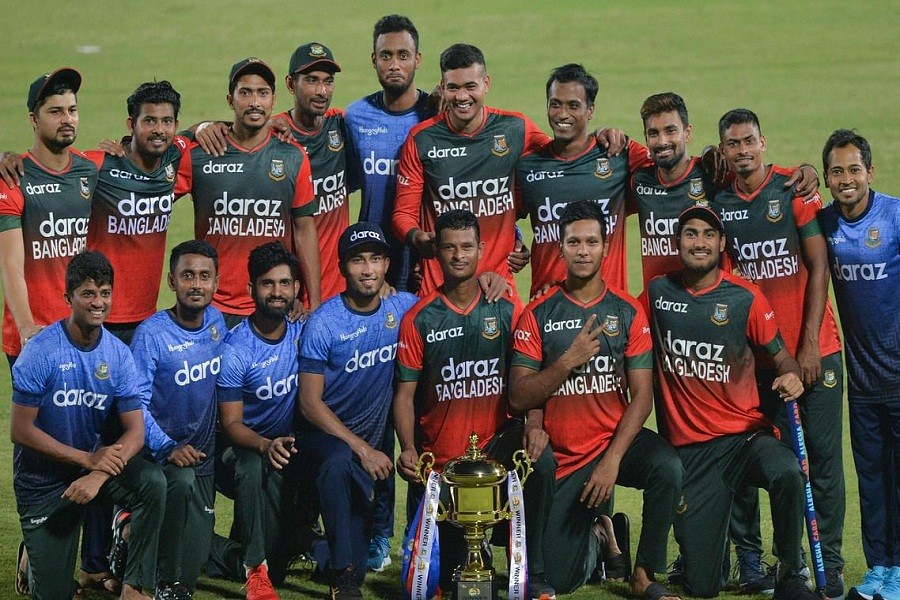
Published :
Updated :

Since 2016, Bangladesh have hosted 352 T20 matches (44 internationals, 308 domestic) in total.
Of those games, 231 have been played in Sher-e Bangla National Stadium (Mirpur, Dhaka), 46 in Zahur Ahmed Chowdhury Stadium (Chattogram), 24 in Sylhet International Cricket Stadium (Sylhet), 19 in Bangladesh Krira Shikkha Protisthan No 3 Ground (Savar, Dhaka), 18 in Bangladesh Krira Shikkha Protisthan No 4 Ground (Savar, Dhaka), 10 in Khan Shaheb Osman Ali Stadium (Fatullah, Narayanganj) and 4 in Sheikh Abu Naser Stadium (Khulna).
In the same period, Bangladesh have played 30 International T20s at home. Of those matches, 22 have been played in Mirpur, 4 in Khulna, 2 in Chattogram and the rest in Sylhet.
Since December 2015, the fans have witnessed five editions of the Bangladesh Premier League. These five editions combined had 218 games. Of those, 145 were played in Mirpur, 51 were in Chattogram and 22 were in Sylhet.
After the pandemic, the country enjoyed another T20 tournament named Bangabandhu T20 Cup, featuring only the local players. This event contained 24 matches – all played in Mirpur.
In the same post-pandemic period, Bangladesh have featured in 10 T20Is at home or more specifically at Mirpur.
The numbers and the facts mentioned above are very much self-explanatory. Quite logically, the more cricket gets played in one particular stadium, the more tired the pitches of that ground are supposed to get.
Over the period of last five years, just the amount of T20 cricket, let alone other formats where the situation is more or less the same, that has been played in Mirpur is simply outrageous.
On one hand, the ground does not get the rest required more often than not, on the other hand, the players playing in the same conditions over and over again do not get technically any better in that process.
The absence of the necessary time for the surfaces to recover largely affects the performance of those pitches.
Since 2016, Chattogram, Sylhet, Khulna-- all have yielded runs at a rate of more than 8 per over (8.48, 8.06, and 8.28 respectively). Although not much behind, the scoring rate at Fatullah has been pretty close (7.83) to that benchmark.
In fact, even Ground 3 of BKSP, which is not even an international stadium, produces runs at a higher rate (7.60) than Mirpur (7.47).
Obviously, there are other factors (size of the boundaries) that have a significant impact on the scoring rate; however, it is for certain that the pitch itself plays the most pivotal role in ensuring the quality of batting conditions.
Shane Watson, former Australian opener, raised this issue while in the commentary box during the match between Bangladesh and Australia in the World Cup.
“I threw myself in their league (BPL) a couple of years ago and I was amazed to see the kind of horrible pitches they held for the tournament. You literally can’t do well playing around one or two stadiums the whole year.”
On top of everything, there was a deliberate attempt to make the pitches even more conducive to spinners during the back-to-back home series against Australia and New Zealand.
The thought process behind this approach was to play with the oppositions’ weakness against spin and gain much-needed momentum ahead of the World Cup. Although the momentum was achieved, courtesy of successive series wins, that momentum came at a big price.
As the star all-rounder Shakib Al Hasan said after the completion of the latter series,
“Those who played the last nine-ten matches, are all out of form. That's how the wicket was. Nobody did well. I hope the batters don't count this performance. Careers will end if any batter plays 10-15 matches on these wickets. Let's not take this into account.”
Quite visibly during the World Cup, all the batters struggled to get a move on and score big – similarly, all the bowlers too struggled to pick up wickets and contain runs in sporting wickets.
Now, it is time for the board to understand the necessity of rotating the games in different stadiums and producing good pitches for the batters unless they are ready to accept further embarrassment in the next edition of the T20 World Cup to be played down under in the following year.
The writer is currently studying at the Institute of Business Administration, University of Dhaka (IBA-DU).


 For all latest news, follow The Financial Express Google News channel.
For all latest news, follow The Financial Express Google News channel.